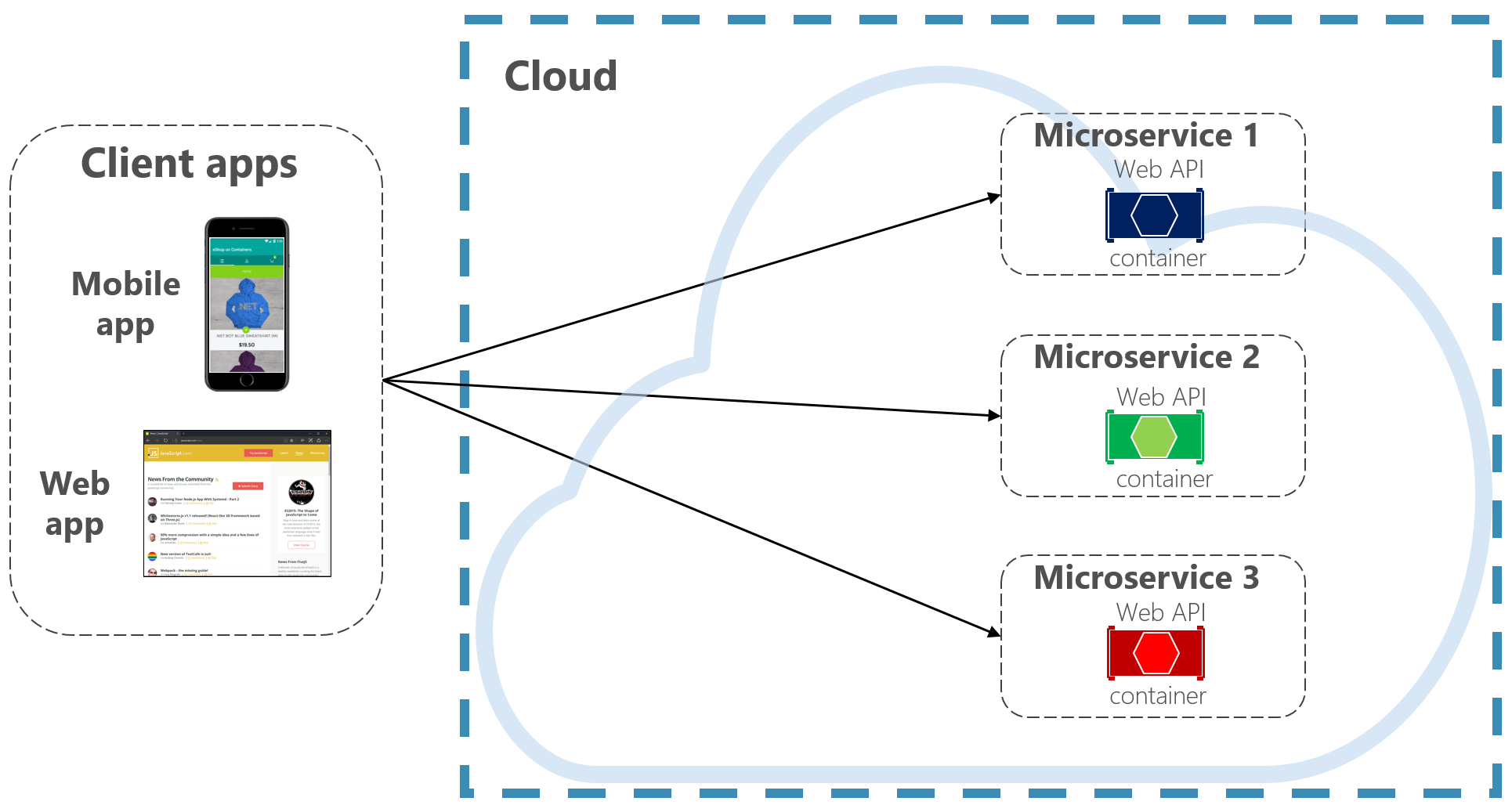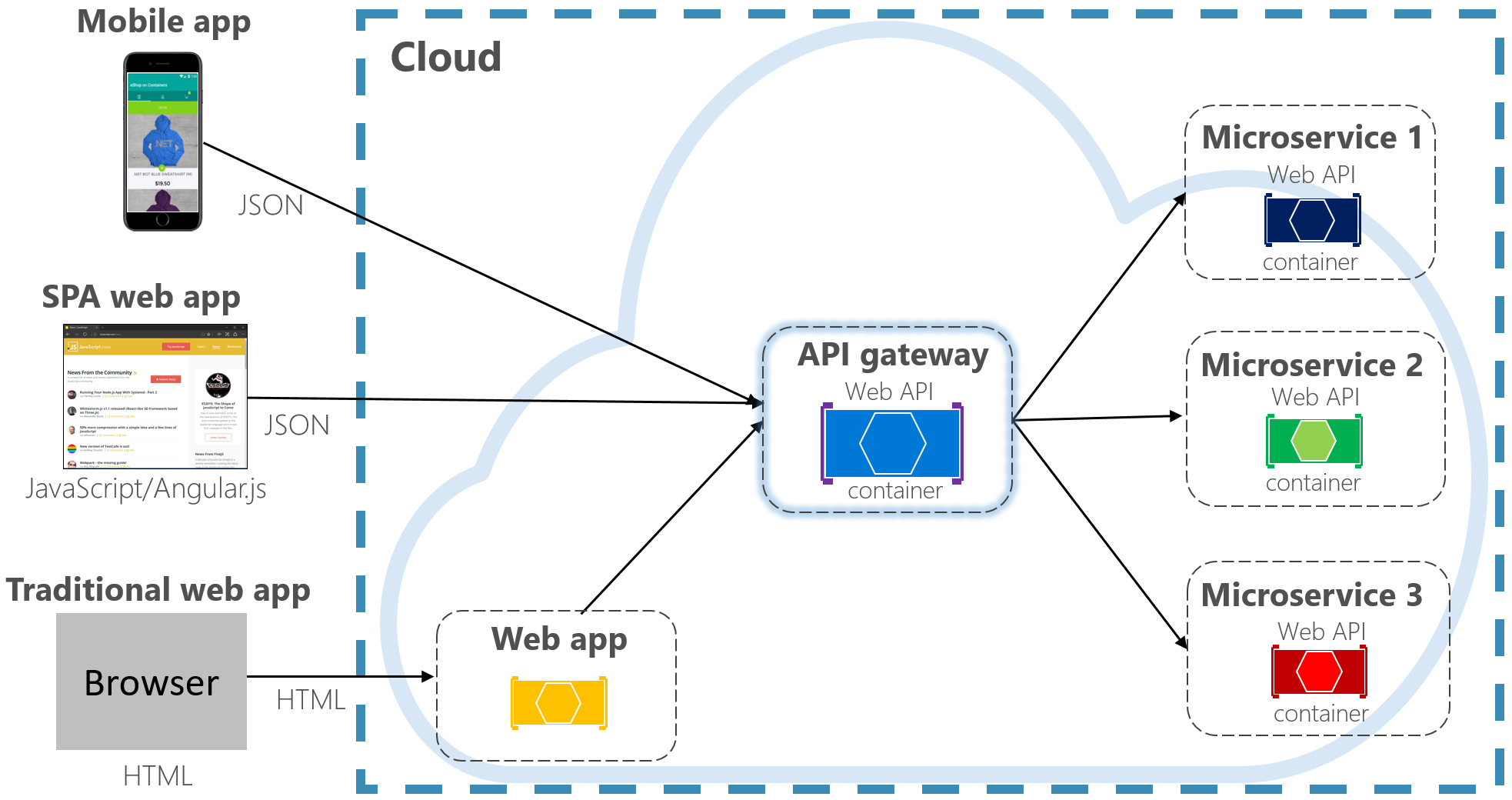The article is from Microsoft.
In a cloud-native system, front-end clients (mobile, web, and desktop applications) require a communication channel to interact with independent back-end microservices.
What are the options?
To keep things simple, a front-end client could directly communicate with the back-end microservices, shown in Figure 4-2.

Figure 4-2. Direct client to service communication
With this approach, each microservice has a public endpoint that is accessible by front-end clients. In a production environment, you’d place a load balancer in front of the microservices, routing traffic proportionately.
While simple to implement, direct client communication would be acceptable only for simple microservice applications. This pattern tightly couples front-end clients to core back-end services, opening the door for a number of problems, including:
- Client susceptibility to back-end service refactoring.
- A wider attack surface as core back-end services are directly exposed.
- Duplication of cross-cutting concerns across each microservice.
- Overly complex client code – clients must keep track of multiple endpoints and handle failures in a resilient way.
Instead, a widely accepted cloud design pattern is to implement an API Gateway Service between the front-end applications and back-end services. The pattern is shown in Figure 4-3.

